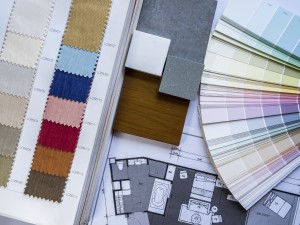INTERIOR DECORATING WORKSHOPS
If you want to contact the instructor directly please email choicesbea046@gmail.com
PROGRAM DESCRIPTION

Fulfil your passion and develop your creative talent! These workshops are for creative individuals who wish to decorate their homes with professional looking results. They are non-credit courses taken for self interest. The workshops are offered Saturdays.
WORKSHOP DESCRIPTIONS
BACKGROUND COVERINGS
Learn about the types, application and selection of ceiling, wall and floor coverings.
COLOUR & SCHEMES
Colour is one of the most stimulating and influential decorating elements. This course presents the variables of colour theory – including psychology, temperature, value and intensity – and applies them to colour schemes to create the desired atmosphere and to enhance furnishings throughout a dwelling.
DECOR ACCENTS
Learn about functional and easthetic aspects, with an emphasis on selection and application. Accessories are the personal finishing touches in colour, shape and texture that affect a decorating scheme. Learn how to select, place and highlight them to achieve the maximum impact.
DECORATING FABRICS
Learn the characteristics and variables that affect natural and synthetic decorating fabrics, including weaves, the application of colours, durability, and maintenance. We will discuss fabric content, pattern mixes, and the textures that are most appropriate for each purpose and decorating style. A plain edge scissors is required.
FURNITURE SELECTION
Learn about the characteristics of casegoods, upholstery and styles.
KITCHEN, BATHROOM & LAUNDRY
This is an introduction to the many elements that make up a functional kitchen, bathroom and laundry space.
LIGHTING APPLICATIONS
Light is required to create the desired mood and to appreciate the decorating products chosen to beautify dwellings. Topics include aesthetics of artificial light, selection and placement of general task and accent lighting.
MODERN AND ECLECTIC STYLES
Learn about the development of products over the past 100 years.
PERIOD STYLES
Learn about the elements that comprise specific styles throughout history.
RESIDENTIAL ARCHITECTURE
Learn the defining characteristics that make the exterior of a house a specific style.
SMALL SPACE DECOR
The physical design in small dwellings can present unique decorating challenges. Learn how to apply background coverings and select furnishings to effectively create actual and visual space to embellish features and complement the decorating style.
SPACE PLANNING
Learn how to plan and manage the use of space as part of an overall design plan. Topics covered include how to develop traffic patterns within the confines of spaces, redesign spaces, prepare elevations and establish furniture arrangements in regards to focal points.
WINDOW COVERINGS
Learn about the characteristics of hard and soft coverings and the coverings most appropriate for various decorating styles.
STUDENT FEEDBACK